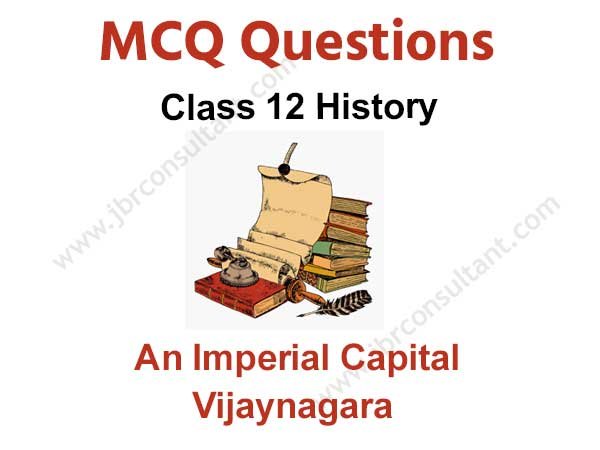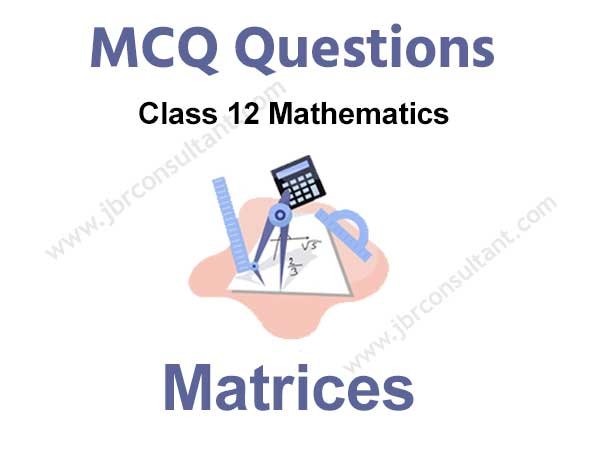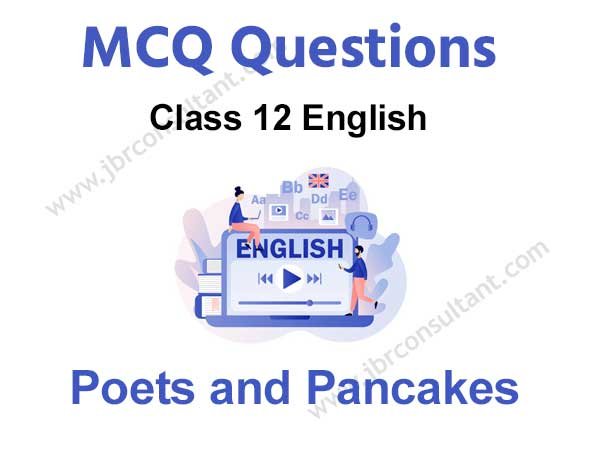An Imperial Capital Vijayanagara Class 12 MCQ is one of the best strategies to prepare for the CBSE Class 12 Board exam. If you want to complete a grasp concept or work on one’s score, there is no method except constant practice. Students can improve their speed and accuracy by doing more MCQ on An Imperial Capital Vijayanagara class 12, which will help them all through their board test.
An Imperial Capital Vijayanagara Class 12 MCQ Questions with Answer
Class 12 History MCQ with answers are given here to chapter 7 An Imperial Capital Vijayanagara. These MCQs are based on the latest CBSE board syllabus and relate to the latest Class 12 History syllabus. By Solving these Class 12 MCQs, you will be able to analyze all of the concepts quickly in the chapter and get ready for the Class 12 Annual exam.
Learn Class 12 An Imperial Capital Vijayanagara MCQs with answers pdf free download according to the latest CBSE and NCERT syllabus. Students should prepare for the examination by solving CBSE Class 12 History An Imperial Capital Vijayanagara MCQ with answers given below.
Question 1: The military chiefs were called as:
(a) Iqta
(b) Rayas
(c) Nayaks
(d) Chief Minister
Answer
C
Question 2: Find out which one of the following is not correctly matched:
(a) Amara-Nayaka System – Vijayanagara Empire
(b) Harihara and Bukka – Founded Vijayanagara
(e) Mahanavami Dibba – King’s palace
(d) Hazara Rama Temple – New Delhi
Answer
D
Question 3: Arrange the following dynasties of Vijayanagara Empire in Chronological order:
(i) Sangama
(ii) Aravidu
(iii) Tuluva
(iv) Saluva
Choose the correct option:
(a) (i), (iii), (iv) and (ii)
(b) (ii), (i), (iii) and (iv)
(c) (i), (iv), (iii) and (ii)
(d) (iv), (i), (ii) and (iii)
Answer
C
Question 4: Till when did Sangama dynasty rule over Vijayanagara?
(a) 1455 CE
(b) 1485 CE
(c) 1495 CE
(d) 1512 CE
Answer
B
Question 5: In 1565 AD, the Vijayanagara army fought the battle of Rakshasi-Tangadi under
(a) Krishnadeva Raya
(b) Rama Raya
(c) Harihara
(d) Bukka
Answer
B
Question 6: When did Krishnadeva Raya die?
(a) 1527 AD
(b) 1529 AD
(c) 1533 AD
(d) 1537 AD
Answer
B
Question 7: When was the city of Vijayanagara founded?
(a) 1336
(b) 1565
(c) 1800
(d) 1498
Answer
A
Question 8: Which traveller called the ‘Mahanavami Dibba’ as the ‘House of Victory’?
(a) Duarte Barbosa
(b) Fernao Nuniz
(c) Domingo Paes
(d) Abdur Razzaq
Answer
C
Question 9: Which was the most important tank built in the early years of the fifteenth century?
(a) Hiriya canal
(b) Kamalapuram tank
(c) Tungabhadra Tank
(d) Both (a) and (b)
Answer
B
Question 10: Who among the following was the sixteenthcentury Portuguese traveler in Vijayanagara?
(a) Barbosa
(b) Ibn Battuta
(c) Harihara
(d) Abdur Razzaq
Answer
A
Question 11: Which European company arrived in India 1498 A.D?
(a) The Portuguese
(b) The British
(c) The East India Company
(d) None of the Above
Answer
A
Question 12: Who among the following was sent by the ruler of Persia to Calicut?
(a) Colin Mackenzie
(b) Alexander Greenlaw
(c) John Marshall
(d) Abdur Razzaq
Answer
D
Question 13: The Battle of Talikota between Vijayanagara and the Deccan sultans took place in which year?
(a) 1550
(b) 1565
(c) 1570
(d) 1575
Answer
B
Question 14: Which goddess is called Pampa?
(a) Goddess Parvati.
(b) Goddess Saraswati.
(c) Goddess Lakshmi.
(d) None of the above
Answer
A
Question 15: When was Hampi declared a World Heritage Site?
(a) 1986
(b) 1998
(c) 2001
(d) 1899
Answer
A
Question 16: The Delhi Sultanate was established in c.
(a) 1155
(b) 1206
(c) 1596
(d) 1655
Answer
B
Question 17: Who founded the Empire of Vijayanagara?
(a) Harihara
(b) Bukka
(c) Colin Mackenzie
(d) Both (a) and (b)
Answer
D
Question 18: The halls in the temple were used for:
(a) As venue for a marriage
(b) Political Meetings
(c) Celebrate the marriages of deities
(d) None of these
Answer
C
Question 19: Find out which one of the following is not correctly matched:
(a) Amara-Nayaka System – Vijayanagara Empire
(b) Harihara and Bukka – Founded Vijayanagara
(e) Mahanavami Dibba – King’s palace
(d) Hazara Rama Temple – New Delhi
Answer
B
Question 20: Choose the correct option:
Which of the following dynasties ruled Vijayanagara?
(a) Sangam dynasty
(b) Saluva dynasty
(c) Tuluva dynasty
(d) All of these
Answer
D
Whoever needs to take the CBSE Class 12 Board Exam should look at this MCQ. To the Students who will show up in CBSE Class 12 History Board Exams, It is suggested to practice more and more questions. Aside from the sample paper you more likely had solved. These An Imperial Capital Vijayanagara Class 12 MCQ are ready by the subject specialists themselves.
Question 21: Which famous ruler found a suburban township of Nagalapuram, near Vijayanagara, after his mother’s name?
(a) Harihara
(b) Bukka
(c) Krishnadeva Raya
(d) Achyuta Deva Raya
Answer
C
Question 22: Which of the following statement(s) is/are correct according to the rules of Vijayanagara Empire?
(a) The Vijayanagara kings competed with contemporary rulers on their northern frontier including the sultans of the Deccan and Gajapati rulers of Orissa for fertile river valleys and resources.
(b) The rulers of Vijayanagara borrowed concepts and building techniques which they then developed further.
(c) Ruling elites in these areas had extended patronage to elaborate temples such as the Brihadishvara temple at Thanjavur and the Chennakeshava temple at Belur.
(d) The rulers of Vijayanagara, who called themselves piyadassi, built on these traditions and carried them, as we will see, literally to new heights.
Which of the following statement(s) is/are correct?
(a) a, b, d
(b) a, b, c
(c) b, c, d
(d) All of the above.
Answer
B
Question 23: Which of the following statement is correct regarding Mahnavami Dibba?
(a) Mahnavami Dibba was an “audience hall” in which the entire complex is surrounded by high double walls with a street running between them.
(b) Mahnavami Dibba was a “prayer hall” in which the entire complex is surrounded by high double walls with a street running between them.
(c) Mahnavami Dibba was a hall for performing special rituals in which the entire complex is surrounded by high double walls with a street running between them.
(d) Mahnavami Dibba was a “bathing hall” in which the entire complex is surrounded by high double walls with a street running between them.
Answer
A
Question 24: When was Hampi declared as of the place of national importance?
(a) 1976
(b) 1980
(c) 1982
(d) 1986
Answer
A
Question 25: Krishnadeva Raya ascended the throne in the year
(a) 1507 AD.
(b) 1509 AD.
(c) 1503 AD.
(d) 1512 AD.
Answer
B
Question 26: The first dynasty that ruled over Vijayanagara Empire was
(a) Suluva dynasty
(b) Sangarna dynasty
(c) Tuluva dynasty
(d) Aravidu dynasty
Answer
B
Question 27: Who established the Vijayanagara Kingdom?
(a) Hasan Gangu
(b) Prantak I
(c) Harihara and Bukka
(d) Krishadeva Raya
Answer
C
Question 28: The Portuguese traveller who jointly called the Audience hall and ‘Mahanavami Dibba’ as ‘the house of victory’ was
(a) Duarte Barbosa
(b) Fernao Nuniz
(c) Afanasi Nikitin
(d) Domingo Paes
Answer
D
Question 29: Hampi was recognised as a site of national importance in
(a) 1976.
(b) 1969.
(c) 1972.
(d) 1966.
Answer
A
Question 30: Which of these rivers are the major source of water for Vijayanagara?
(a) Kaveri
(b) Krishna
(c) Tungabhadra
(d) Mahanadi
Answer
C
Question 31: Consider the following statements regarding the Lotus Mahal:
(i) Lotus Mahal of the most beautiful buildings in the royal centre is the Lotus Mahal, so named by British travellers in the nineteenth century.
(ii) One suggestion, found in a map drawn by Mackenzie, is that Lotus mahal may have been a council chamber, a place where the king met his advisers.
(iii) Lotus Mahal had nine towers – a high central one, and eight along the sides.
(iv) The Lotus Mahal is otherwise called the Kamal Mahal or Chitragani Mahal. It is one of only a handful few astonishing building in Hampi that had not been damaged or destroyed amid the attack on the city.
Which of the following statement(s) is/are correct?
(a) (i), (ii)
(b) (i), (ii), (iii)
(c) (i), (ii), (iv)
(d) All of the above.
Answer
D
Question 32: The first dynasty that ruled over Vijayanagara Empire was
(a) Suluva dynasty
(b) Sangarna dynasty
(c) Tuluva dynasty
(d) Aravidu dynasty
Answer
B
Question 33: On which of the following occasions were ceremonies performed at Mahanavami Dibba?
(a) Worship of the state horse
(b) Marriage of the king
(c) Victory over the enemy
(d) All of the above
Answer
A
Question 34: Krishnadeva Raya’s successors were disturbed by the rebellious _____.
(a) Bijapur
(b) Naykas
(c) Cholas
(d) Cheras
Answer
B
Question 35: Which of the following statement(s)is/are correct regarding Virupaksha Temple?
(i) Virupaksha Temple is located in Hampi in the Ballari district of Karnataka, India. It is part of the Group of Monuments at Hampi, designated as a UNESCO World Heritage Site.
(ii) Virupaksha Temple is the main center of pilgrimage at Hampi and had been considered the most sacred sanctuary over the centuries.
(iii) The temple is dedicated to Lord Vishnu, known here as Virupaksha/Pampa pathi.
(iv) The front hall of the shrine was built by Krishnadeva Raya accession. Which of the following statement(s) is/are correct?
(a) (i), (ii), (iii)
(b) (i), (ii), (iv)
(c) (i), (iii), (iv)
(d) All of the above
Answer
B
Question 36: The ruins at Hampi were brought to light in 1800 by
(a) Alexander Greenlaw.
(b) Colonel Colin Mackenzie.
(c) Fernao Nuniz.
(d) J.F. Fleet.
Answer
B
Question 37: Which goddess is called Pampadevi?
(a) Goddess Parvati.
(b) Goddess Saraswati.
(c) Goddess Lakshmi.
(d) Goddess Kali
Answer
A
Question 38: Find out which of the following is not correctly matched?
(a) Virupaksha Temple: Lord Shiva/Pampa path
(b) Hazara Rama Temple: Mathura
(c) Vitthala Temple : Lord Vishnu
(d) Mahanavami Dibba: King’s palace
Answer
B
Question 39: The ruins of Hampi were brought to light in 1800 by
(a) Alexander Greenlaw.
(b) Colonel Colin Mackenzie.
(c) Fernao Nuniz.
(d) J.F. Fleet.
Answer
B
Question 40: Krishnadeva Raya composed a work on statecraft known as the Amuktamalyada in
(a) Kannada.
(b) Malayalam.
(c) Tamil.
(d) Telugu.
Answer
D
Question 41 : Harihara and Bukka belonged to which dynasty?
(a) Tuluva
(b) Saluvas
(c) Aravidu
(d) Sangam
Answer
D
Question 42: Which of the following statements is correct regarding Mahanavami Dibba?
(a) It was a high platform with slots for wooden pillars at a dose and regular intervals.
(b) It was a massive platform located on one of the highest points in the city.
(c) It was a place where the king met his advisers.
(d) All of the above
Answer
B

You can easily get good marks If you study with the help of Class 12 An Imperial Capital Vijayanagara MCQ. We trust that information provided is useful for you. NCERT An Imperial Capital Vijayanagara Class 12 MCQ PDF Free Download would without a doubt create positive results.
We hope the information shared above in regards to MCQ on An Imperial Capital Vijayanagara Class 12 with Answers has been helpful to you. if you have any questions regarding CBSE Class 12 History Solutions MCQs Pdf, write a comment below and we will get back to you as soon as possible.
Frequently Asked Question (FAQs)
How many MCQ questions are there in Class 12 chapter 7 History?
In Class 12 chapter 7 History, we have provided 42 Important MCQ Questions, But in the future, we will add more MCQs so that you can get good marks in the Class 12 exam.
Can we score good marks in Class 12 History with the help of An Imperial Capital Vijayanagara MCQ Questions?
Yes, MCQ Question is one of the best strategies to make your preparation better for the CBSE Board Exam. It also helps to know the student’s basic understanding of each chapter. So, You can score good marks in the Class 12 History exam.


